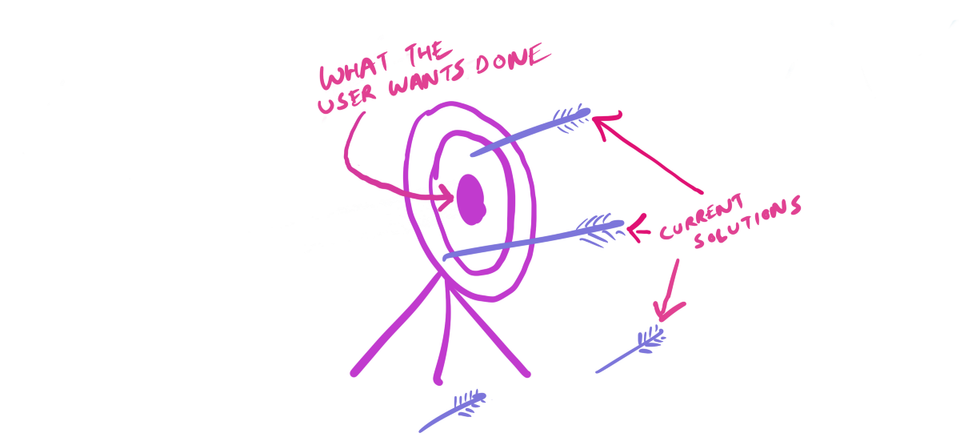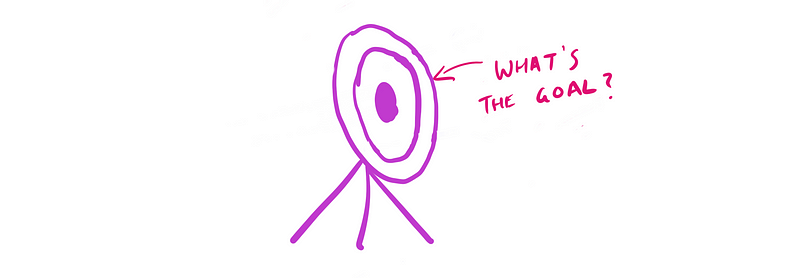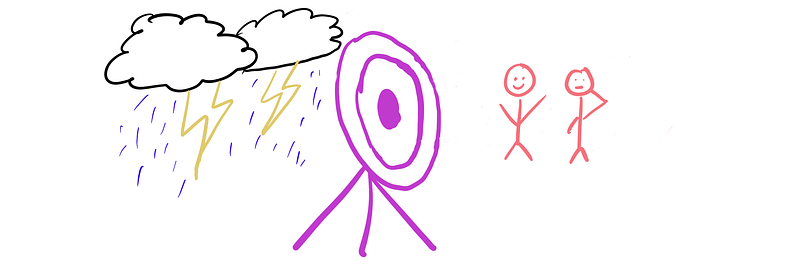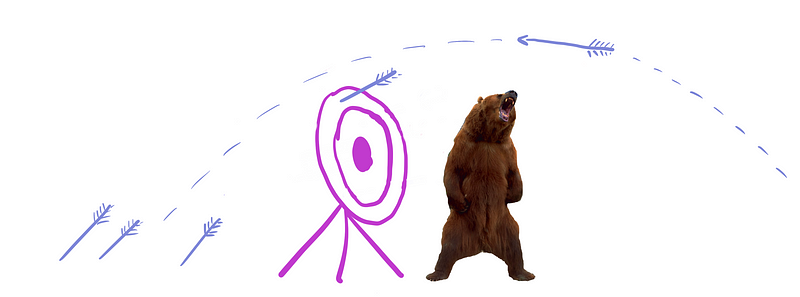Interview tactics to find worthwhile customer problems

The call to arms for entrepreneurs and product managers is to find a problem worth solving and do something about it. But how specifically do you come up with a good problem?
In my experience, if you simply ask someone what’s painful about a particular product or process, the answers tend to be surface-level (“the button to do x is hard to find” or “the UI looks super outdated”). To arrive at an obstacle worth eliminating, it takes a deeper understanding of what people want to get done. It also takes an appreciation of the emotional and social environment to figure out why people want to do it.
For this, I borrow a lot from Clayton Christensen’s Jobs to Be Done framework. Christensen argues that most companies are founded on problems discovered accidentally. To innovate in a way that isn’t based on luck, we need a more scientific method to reveal jobs that have bad or partial solutions.
During customer interviews, finding jobs with inadequate solutions boils down to a few tactical lines of inquiry. I’ll illustrate my approach with the example of a residential realtor, many of whom I’ve interviewed for my work as a product manager at States Title.
1. What are they trying to do?

Typically, I like to start very high-level and use some combination of the following questions:
- When working as a realtor, at the end of the day, what are you trying to get done?
- What is that you have to do in order to feel accomplished?
- What progress are you trying to make?
Their responses are frequently along the lines of: “I’m trying to sell houses [in the case of a listing agent] in order to get paid and also to acquire new clients. If you’re known as a good listing agent, you get more business. My feeling of accomplishment comes when a deal closes or when a new client agrees to work with me.” Answering these questions reveals a high-level understanding of your audience’s objective, but we need to drill further to get to a “job.”
It’s important to note that you should try to narrow the conversation away from generic responses like “I need to earn money” or “make my customers happy” because these responses don’t help you at all. Jobs, as Christensen defines them, are “ongoing and recurring” and take place within certain circumstances. Our goal is to get the full story of what, who, how, and most importantly why they’re doing what they’re doing.
2. What circumstances surround their goal?

Based on our realtor’s response, we need to get more context on the environment around the job so the story takes more form. This is where I like to introduce more of the who, where, and how questions.
- Who else is involved in the process of closing on a house? “There are many people involved: Me, the buyer’s agent, the buyer, the seller, the lender, the appraiser, the home inspector, and eventually the escrow officer.”
- Where do you physically have to be in order to sell or pick up new clients? “For selling, I do most of my business from my car — on my phone. I’m typically rushing around to different open houses and staging or showing them, meeting my clients in person for updates, dropping off purchase contracts to the title company. To get new clients, I find myself creating flyers, blogging, posting on social media, taking referrals from previous clients — that’s the best way.”
- How do you get paid? “I get paid at the closing. Either by a wire out of the escrow account or by being mailed a check.”
This isn’t a full listing. My preference is to ask followup questions in order to gather enough information that I can clearly summarize my audience’s goals and circumstances back to them and make sure they agree with my summary.
3. What gets in the way?

Now that we have a richer picture of what the realtor is trying to do and the context of their job, we want to excavate for an opportunity.
- What are the biggest things that prevent you from closing deals more often? “Oh, lots of things! Getting a buyer and seller to come to an agreement can take a long time. After that, inspections, appraisals, and title can all also drag on and extend the closing cycle.”
- What prevents you from taking on more listings in parallel? “The time investment for an individual home sale can be huge. Stagings and showings take a long time, but we need to do them because they have a big impact on the sale. Some realtors have a big enough client pipeline that they can afford to hire assistants to do all that stuff, but I don’t have a big enough portfolio to do that.”
- What obstacles do you face in acquiring new clients? “Marketing. It’s very hard to become known. Most successful realtors have been in the game for a long time. They have a long history of sales and happy clients. A large proportion of their new clients come from their previous ones.”
4. What solutions or workarounds are they trying right now?

At this point, we’ve revealed several great candidate issues for further exploration:
- The closing process takes a long time even after the buyer and seller agree to a purchase.
- Repeated tasks, such as showings, consume the time of the realtor and prevent them from onboarding more clients in parallel.
- Self-promotion for new business is very difficult because it relies on reputation, which takes a lot of time and energy to build.
To avoid exploding the scope of the interview, I like to talk more about a single obstacle. I choose based on the one that I perceive to cause the most pain for the interviewee. Another good indicator is if they keep harping on one thing in particular. In our example, our realtor mentioned stagings and showings a couple times, so I want to dig into that more.
- How do you currently handle these repeated tasks like home staging and showing? “I just do it all myself. I’ll hang out for a couple hours at a time to show and meet potential buyers. With staging, there are companies around who will do it for you (people who bring furniture and spruce up the home you’re selling), but they tend to be pricey.”
5. What would a quality solution look like?

Here’s where we can obtain the basic requirements for our solution, if we choose to make one.
- Say there was a way to make it so you didn’t have to personally do home stagings or be present to conduct showings. What characteristics would this solution have to have in order for you to use it? “Well, it’d have to be cheap. I don’t normally spend more than $500 on staging a house. It would also have to give me comfort about the security of the house and my seller’s belongings. I’d worry that if I wasn’t there, people might steal stuff. I’d also want to know how each showing went. Did we have good prospects? How would we engage with the potential buyers?”
After all of this, we’ve finally revealed an underserved need and even developed a basic set of requirements if we did choose to solve.
Takeaways
I like to approach problem discovery interviews with users by thinking in terms of the Jobs to Be Done. For me, it’s a solid way of uncovering the root cause of a user’s behavior, revealing what their current solutions lack, and where there may be opportunities to innovate. This means getting clear on:
- What are they trying to do?
- What are the circumstances surrounding their goal?
- What gets in the way?
- What solutions or workarounds are they trying now?
- What would a quality solution look like?
Repeating this process across many interviews lets you develop patterns and see which underserved needs crop up repeatedly. Using this method also signals whether there is adequate demand for a better solution and even its key requirements.